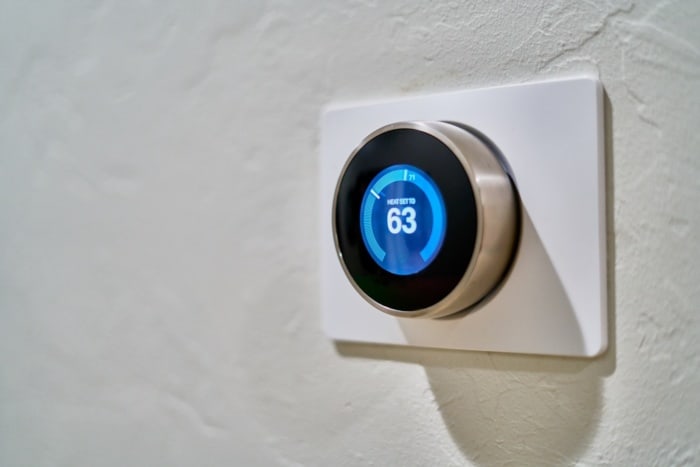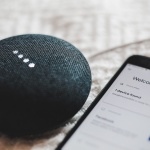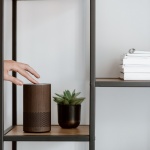Home automation is becoming very popular all over the world.
In fact, Precise Security reported that the global smart home market will continue to grow, reaching $158 billion in value by 2024.
This signifies that more and more homeowners are purchasing some type of intelligent home device, such as voice assistants, automatic lighting, or smart security systems, among many others.
This site is reader-supported and we earn commissions if you purchase products from retailers after clicking on a link from our site. As an Amazon Associate, I earn from qualifying purchases.
Home automation as home improvement
Keeping up to date with the latest technology is one of the main reasons for creating a more intelligent home. However, they can also be considered as a home improvement project — one that can increase your property’s value.
If this is something you’d be interested to achieve, it’s important to remember the main principle of home improvement: The changes or additions you make should cost less than the value it will add in the end.
This is why certain types of home improvements work better than others. A Marcus article on home improvement loans points out that renovating your home’s exterior, updating your kitchen, and small changes like swapping out door knobs can potentially add value to your property.
In contrast, many disgruntled homeowners have made the mistake of investing in new swimming pools and room additions, which often cost more than they are worth in the end. This same principle goes for smart home devices.
It’s important to carefully select smart home devices that give you the most bang for your buck. You need to avoid those that, while fancy on the surface, don’t offer much value and will only cost you in the long run — as in the case of the now defunct Laurastar Smart Iron and the potentially dangerous PetNet SmartFeeder.
Knowing how long you’re planning on living in a home helps in calculating your return on investment, too.
Now, how exactly does home automation increase the appeal of your home? Other than being popular, these are the benefits of installing smart home devices that can contribute to a higher property value;
Smart devices increase comfort and convenience
Having a connected home means you can control many of your household functions with a touch of a button.
For instance, Google Home does more than provide voice assistance — it also connects with and manages other smart tech devices at home.
From your favorite seat in the house, you can motorize your blinds and curtains, adjust the thermostat, and change the lighting to suit your taste. Alternatively, you can instruct your voice assistant to do these tasks for you.
Then, you can have a very comfortable night in streaming your favorite shows on your smart TV.
You can save energy and costs with a smarter home
An energy-efficient home is a cost-saving home, and that can make for an easy sell to potential buyers.
Fortunately, many smart home devices are designed to reduce energy use at home.
For example, The Balance notes that smart thermostats create a personalized energy-saving schedule based on your household’s temperature patterns. It learns trends within your home and automatically makes adjustments that suit your preferences.
Smart devices with similar features include shower heads that adjust water flow; power strips that automatically cut off the electricity when not in use; sensor-enabled light bulbs that shut off; and sprinkler systems that use local weather patterns to adjust watering schedules.
Boost home security with smart devices
Ensuring your home is safe is one of the main priorities that you and smart home devices share.
There are many security-oriented products popping up in the market — from stand-alone components like smart locks, to more comprehensive smart security systems.
Though they can definitely be pricey, with PC Mag’s best-reviewed ADT Pulse costing more than $3,000 upfront, smart security systems are well worth the investment. They are often composed of security cameras, video doorbells, and smart locks.
The cameras, in particular, are equipped with smart sensors that detect unusual activity outside or within the home, such as intruders or strange cars. They also have night vision and work well at late hours.
You can control these components through the app and enable notifications — which you should — if anything unusual happens around the house.
These smart devices don’t only boost your property’s value and offer convenience like no other, but they can also help you sleep more comfortably at night.
Choosing and installing smart home devices wisely
Just because smart home devices are smart doesn’t mean that homeowners don’t have to be.
It can be very tempting to purchase each new gadget that rolls out. However, you have to carefully select how it fits into your entire home setup. Here are three of the most common mistakes you should avoid when creating a smart home:
Lack of planning
Is your home structurally ready for smart devices? That’s the first question you should be asking. For instance, make sure you have enough internet bandwidth to power all of these devices at once.
While smart light bulbs and thermostats don’t require much, intelligent security cameras use up to 4 Mbps for uploads. This might affect network connectivity for other users in your house.
Consider how you’ll be powering these gadgets as well. Ask an electrician to do an inspection of your wiring before installing a big appliance, such as a smart refrigerator, to see whether your house can actually accommodate these additions.
And lastly, it’s best to choose devices from the same manufacturer or that are compatible with each other. Though there are standards being proposed to make using multiple IoT devices simpler, PopSci noted that they’re not optimized to work with each other just yet. Some devices are Wi-Fi-dependent, while others rely on Bluetooth; you can make a smart home without internet though – click here for more.
It’s these differences in connectivity can make the experience of owning smart devices counterproductive for some overeager homeowners.
Self-installation
DIY installation is completely fine as long as you’re familiar with smart home devices. Anyone can plug and operate a smart speaker, but not everyone is equipped to install intelligent security systems.
While self-installation is comparatively cheaper than professional installations, Tech Hive points out that it’s not ideal with third-party gear. Having a professional do it for you can eliminate the hurdle of contacting both the hub vendor and the device vendor should any problems arise during the installation.
It also helps you sleep easy knowing that your new smart home device is installed properly.
Overcomplicating it
There’s such a thing as too much when it comes to home automation.
Inventions like smart pillows and smart water bottles are unnecessary, and tend to overcomplicate aspects of life that should be easy.
Ask yourself who the primary user of these devices would be. If you live with children or older adults, consider how user-friendly the smart devices you choose will be for them.
Remember that the primary goal of smart home devices is not to make our home life frustrating or cumbersome, but ultimately better.





